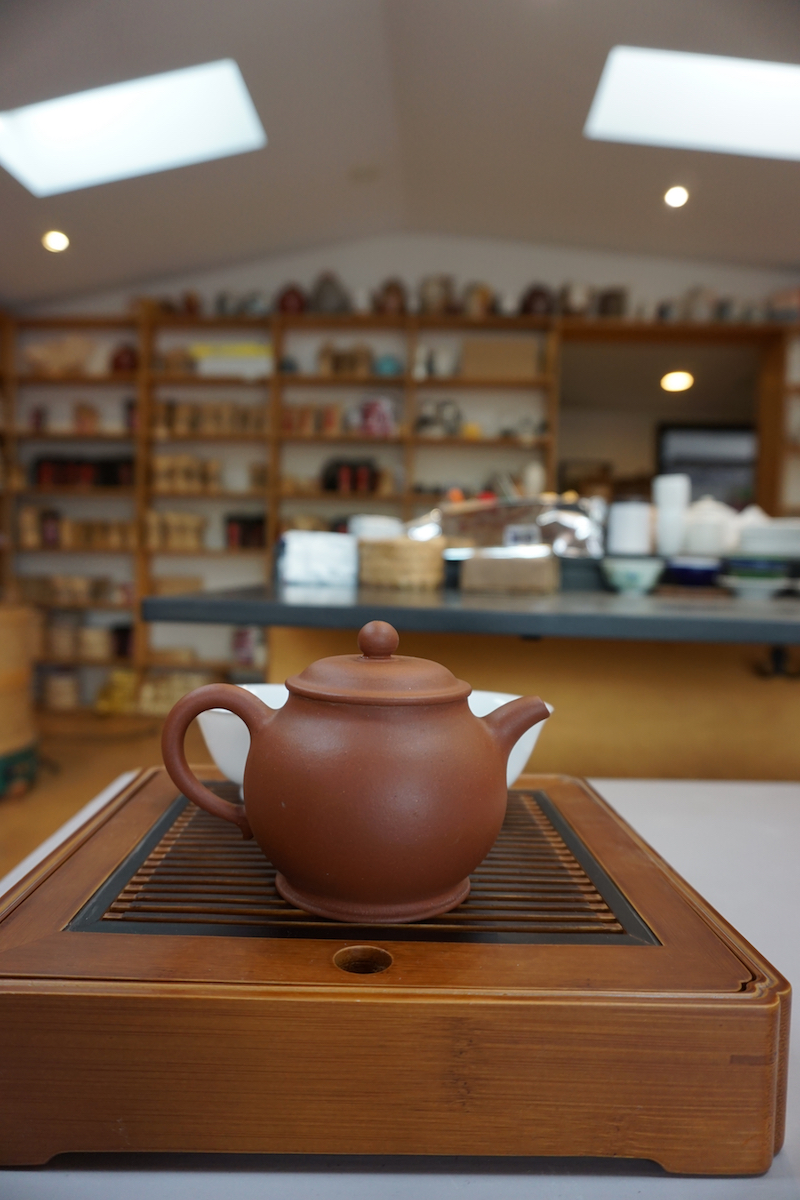On Choosing a Teapot: The essential teaware for gong fu cha

My last blog post on how to brew gong fu cha in 6 easy steps brought up the topic of teaware for gong fu brewing. I thought it would be helpful to give you a list of the essential teaware for gong fu brewing. The tea pot is the first key piece of teaware. Specifically, an Yixing clay teapot. This is an essential piece of teaware! And if you are a devotee to the art of gong fu brewing, you should know now that you will amass a collection of these small teapots. So the good news is that you don’t really have to worry too much about getting “the best” teapot anytime soon. You can just get one and learn from it.
Over the years, I’ve bought and sold and bought and kept for personal use a large number of teapots. I don’t know how many exactly, but I have been buying teapots since 2002. Twenty years ago, when I was first buying pots, it was for myself.
Over the years, I’ve learned to stay away from any added exterior designs. The simpler the pot, the easier it is to see the level of detail and care put into the actual pot. To evaluate this, pick a part of the pot that every pot has, i.e. the section of the pot that meets the lid of the pot. Remove the lid. Feel and look at the rim, exterior, interior, and upper surface that the lid rests on. If you are comparing two or three pots, even better. This component of the pot is just one of many that can give you some clues to the craftsmanship of the pot. This can help you understand how the pot was made and the degree to which it was handbuilt.
Generally I stay away from pots that look like animals or plants or anything else other than a pot. The photo shows a pot that I bought for myself specifically for the purpose of brewing Eastern Beauty Oolong or Dong Fang Mei Ren. It is simple, though it does feature some design flourishes such as the foot base that continues around the entire pot and the pointed tail at the bottom of the handle. It looks a bit like a Dao Ba, or handle that is “ass over teakettle.” Sorry, I couldn’t help it!
“Why are the pots so small?” is a question I would frequently hear in the teahouse. But don’t let these little pots fool you. Because we are brewing the tea for several steeps, anywhere from five to twelve or even more infusions if you are so inclined, these little babies yield loads of tea! You have to keep in mind that we are dealing with really high quality tea, and the way to understand and appreciate all of the nuanced flavor and aroma of this caliber of tea is to extract the layers of flavor a little bit at a time. While it can be good if you put three to five grams in your strainer in a mug and steep for three to five minutes, it just isn’t the same. It might seem like a lot of trouble, but it is worth it. Sometimes gong fu cha is referred to as “lao ren cha” or “old people’s tea” because “old people” have more free time. This is a leisure art. You have to have free time. And if you have free time, you need to know how to enjoy your free time. That, my friends, is sophistication.
